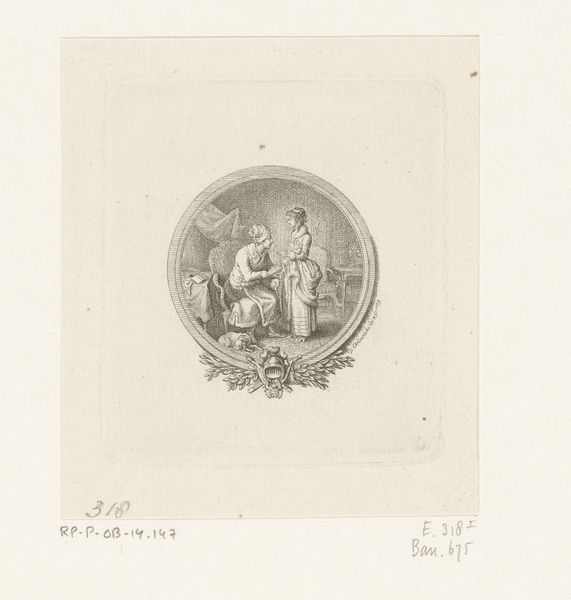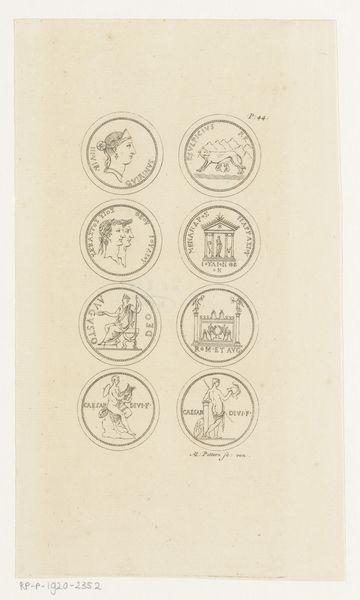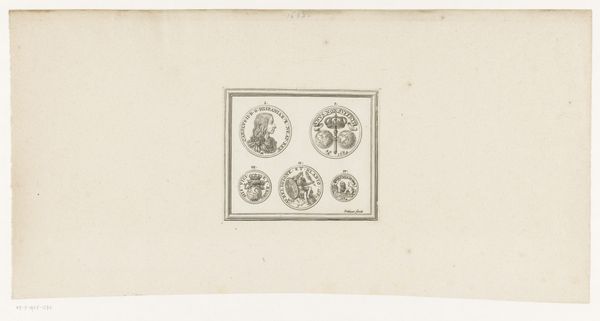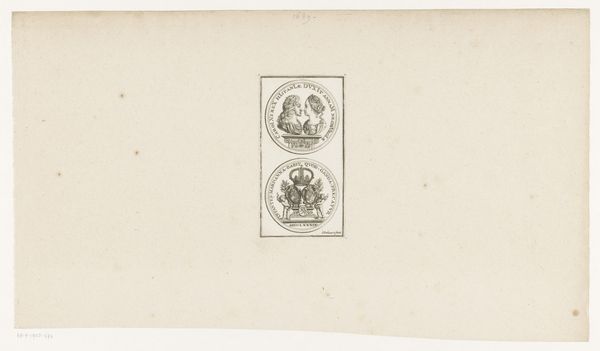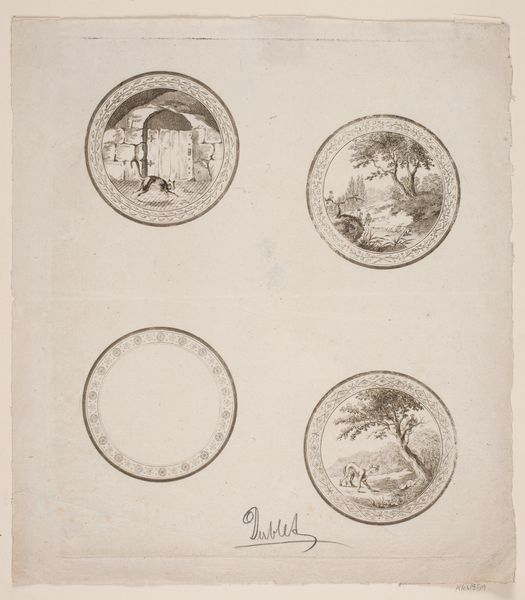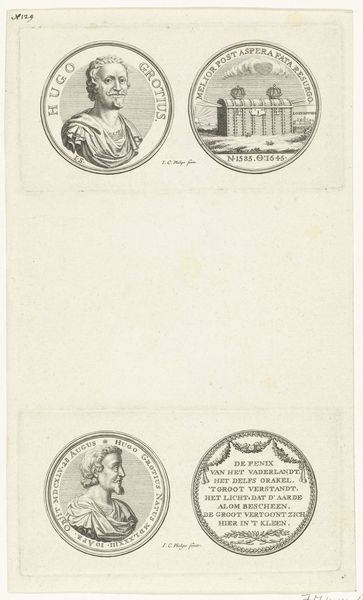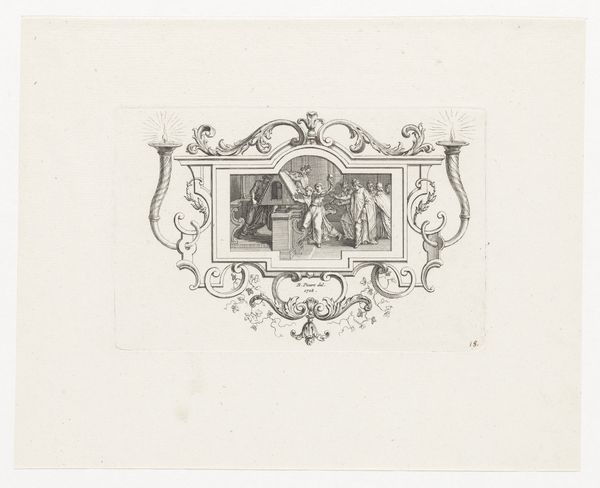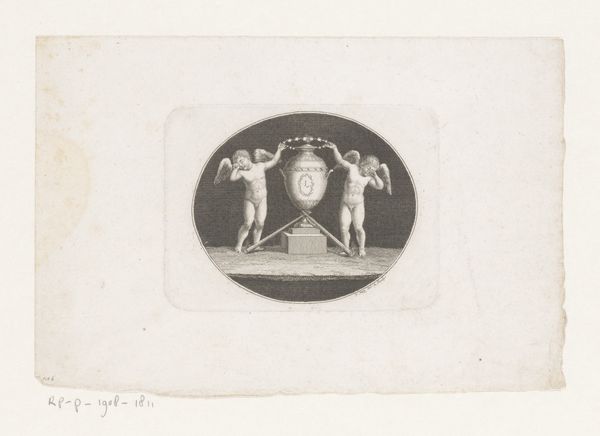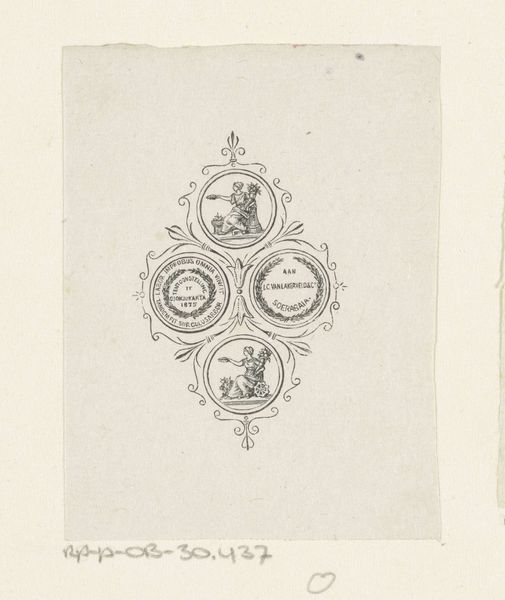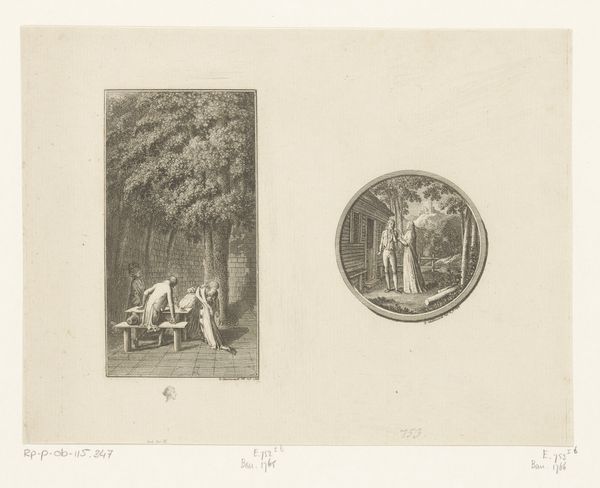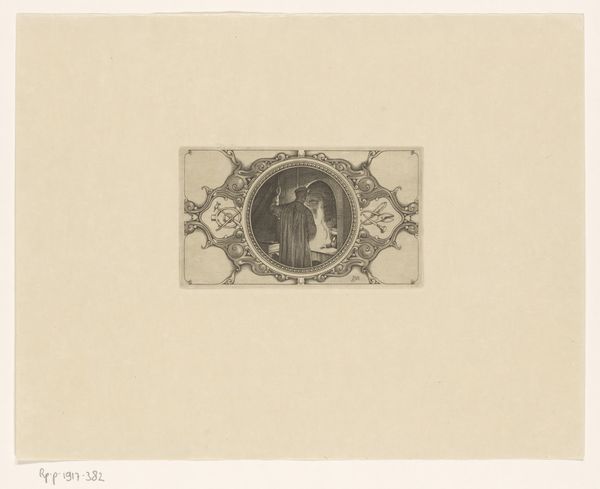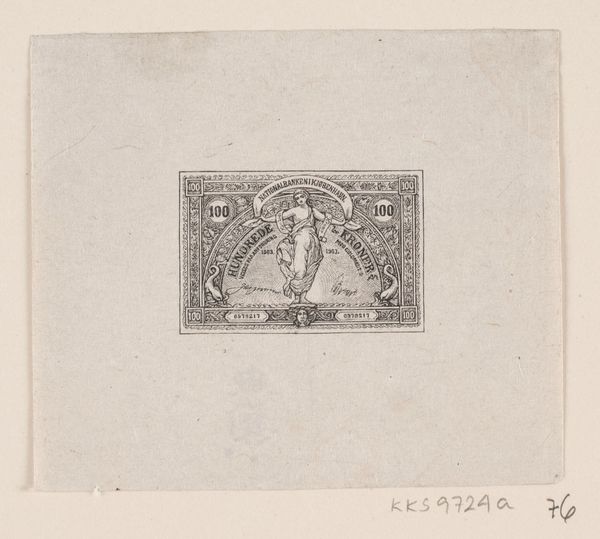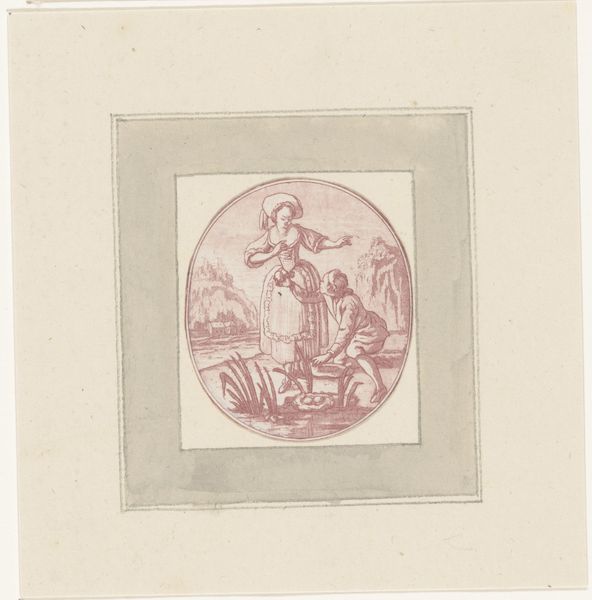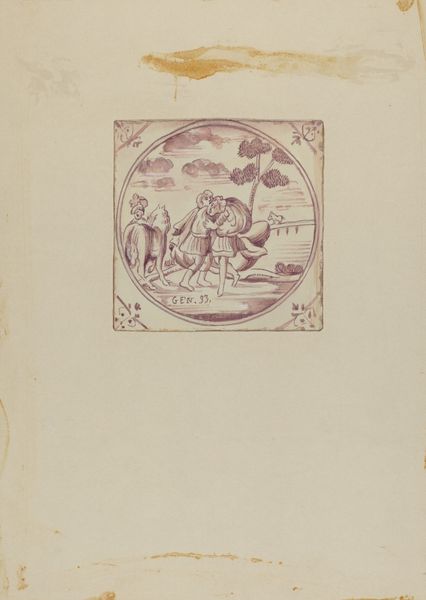
Dimensions: height 120 mm, width 170 mm, diameter 27 mm, diameter 34 mm, diameter 32 mm, diameter 33 mm
Copyright: Rijks Museum: Open Domain
Curator: These small circles feel so self-contained, like individual worlds glimpsed through a porthole. There’s a delicate intimacy to them. Editor: Indeed. We're looking at "Four Japanese Motifs in Circles" by Henri-Charles Guérard, created between 1856 and 1897. This piece, housed right here in the Rijksmuseum, is an ink and woodcut print that evokes ukiyo-e traditions. Curator: The ukiyo-e influence is undeniable. There’s this flatness, a simplification of form… it’s almost like viewing icons, but with a wry, knowing wink. Is Guérard appropriating or engaging in genuine cultural exchange here? That’s what comes to my mind. Editor: That's a crucial point. France in the late 19th century was fascinated by Japonisme. Prints like these were popular, but also became contested spaces for cultural identity. Were artists genuinely appreciating Japanese art, or merely exoticizing it for Western audiences? What role did market demand play in this artistic expression? Curator: Right, and how are we reading the representation of women? The central figure in the top left, kneeling by what appears to be a lantern…is this a gesture towards subservience, or something else entirely? I find her isolation compelling. And what about the bald figure seated and reading – could that be Daruma? What meanings get attached depending on who holds that cultural key? Editor: These motifs likely circulated as references – easily bought and collected. Looking closer, it raises questions about the societal position of the figures he portrays, particularly women, and how Western interpretations might obscure their original cultural context. Curator: Exactly. It forces us to consider the lens through which we're viewing these figures. We can’t take it for granted. Editor: Agreed. Guérard's piece is an excellent reminder that artworks aren't created in a vacuum. Examining its historical and cultural context—the rise of Japonisme, the circulation of imagery, the politics of representation—allows us a much richer understanding. Curator: A good example of how art can serve as a launchpad for dialogues across time, culture, and power dynamics. It invites us to reconsider narratives around representation, asking who is doing the looking, and what do they truly see?
Comments
No comments
Be the first to comment and join the conversation on the ultimate creative platform.
